




Name:
Class: School:

Academic Authors: Roma Jain, Anuj Gupta
Creative Director: Bhavna Tripathi
Book Production: Naveen Gauniyal, Sanjay Kumar Goel
Project Lead: Pooja Gupta
VP, Learning: Abhishek Bhatnagar
All products and brand names used in this book are trademarks, registered trademarks or trade names of their respective owners.
© Uolo EdTech Private Limited
First impression 2025
This book is sold subject to the condition that it shall not by way of trade or otherwise, be lent, resold, hired out, or otherwise circulated without the publisher’s prior written consent in any form of binding or cover other than that in which it is published and without a similar condition including this condition being imposed on the subsequent purchaser and without limiting the rights under copyright reserved above, no part of this publication may be reproduced, stored in or introduced into a retrieval system, or transmitted in any form or by any means, electronic, mechanical, photocopying, recording or otherwise, without the prior written permission of both the copyright owner and the above-mentioned publisher of this book.
Book Title: Dawn STEM Exploration Level B
ISBN: 978-81-979765-2-0
Published by Uolo EdTech Private Limited
Corporate Office Address:
85, Sector 44, Gurugram, Haryana 122003
CIN: U74999DL2017PTC322986
Illustrations and images: www.shutterstock.com, www.stock.adobe.com and www.freepik.com
All suggested use of the internet should be under adult supervision.

elcome to DAWN, our comprehensive series for Early Childhood Education that has been meticulously crafted to align with the guidelines of the Foundational Stage as outlined in the National Education Policy (NEP) 2020. This series is designed to provide a holistic learning experience, fostering the comprehensive development of young learners in accordance with the developmental milestones and learning outcomes specified in the National Curriculum Framework (NCF) 2022.
DAWN offers a rich blend of interactive and activity-based content to nurture each child's physical, emotional, intellectual, and spiritual growth. Our approach ensures that learning is enjoyable and meaningful, catering to every child's interests and abilities. By integrating various domains of development, we aim to create an environment where children can thrive, explore their unique potentials and cultivate a lifelong love for learning. The curriculum is structured to promote Physical Development by incorporating activities that enhance motor skills, health, and overall physical well-being. Social and Emotional Learning (SEL) is a critical component focusing on building empathy, cooperation, and strong interpersonal relationships. Through engaging and thought-provoking activities, children develop Intellectual Capacities, fostering critical thinking, problemsolving, and a curious mind.
In line with the NCF 2022, DAWN also emphasises Spiritual and Moral Development, encouraging children to understand and embody values such as honesty, integrity, and respect for others. We aim to instill a sense of responsibility towards the environment, promoting sustainable practices from an early age.
Our curriculum is not just a series of lessons but a journey of discovery, growth, and joy. We believe that every child is unique, and our tailored approach ensures that each learner can engage with the content in a way that resonates with their individual needs and interests. By providing a nurturing and stimulating environment, DAWN sets the foundation for future success, preparing children not just for school, but for life.
The DAWN Level B Kit includes:
1. Literacy Skillbook
3. Numeracy Skillbook
5. General Awareness
7. Art and Craft
2. Literacy Workbook
4. Numeracy Workbook
6. STEM Exploration
8. Rhymes and Stories

Free Additional Resources:
• Flash Cards
• Sticker Sheets
• Suggested Activities List, for teachers and parents
• Teacher's Manual

9. Phonics Story Cards

• Digital Learning Resources
Thank you for embarking on this educational journey with us. Together, we can make the dawn of early childhood education a bright and promising start for every child.

The early years of a child’s life are filled with curiosity and a natural desire to explore. Every question they ask and every observation they make lays the groundwork for understanding the world. The STEM Exploration book has been carefully crafted to introduce young learners to scientific concepts in age-appropriate experiments and activities.
These hands-on experiments are designed to be done under the supervision of adults. The learners can imbibe the concept both through observation of and participation in the experiments provided. Each experiment introduces the concepts in a fun, interactive way. The activities are easy to demonstrate, allowing children to be guided through playful exploration. These experiments encourage young learners to observe, ask questions, and actively participate, developing critical thinking and problem-solving skills.

At this age, learning should be driven by play and discovery. By engaging in these activities, children will start building an early foundation for STEM learning in a way that feels natural and enjoyable. As parents and educators, your role is key. By sharing your enthusiasm for these activities, you’ll inspire children to love learning and exploring. We hope this book sparks curiosity and a sense of wonder, opening the door to a lifelong interest in STEM. Happy exploring!





Spatial Awareness; Learning by Doing
Exercises that help children understand basic concepts of physics and engineering, such as flight and aerodynamics. Activities like simple origami hones fine motor skills and improves their understanding of space and shapes.
Observation, SORTING AND CLASSIFICATION, Attention to Detail, Critical Thinking
Exercises that help children to identify and understand patterns in things around them to improve their observational skills, wider spatial understanding and cognitive abilities.


Scientific Inquiry and Investigation, Innovation
Exercises that encourage children to understand concepts of physics such as light and shadow through simple experiments, thereby nurturing a scientific temperament in them.
Creativity and Play-and-Activity-based Learning
Simple and enjoyable exercises to imbibe biological concepts such as taste. These exercises also help children to be more aware of their sense organs and to grasp key concepts and remember them as muscle memory.





In this fun activity, we are going to learn how air can make wet clothes dry.
Let’s Collect
) 1 small hanky
Let’s Do:
1. Switch off the fan. Take your hanky. Spread it out. Then, feel it.
2. How does it feel?


3. Now, sprinkle a little water on your hanky. You can use tap water for that. Make sure to turn off the tap after use.
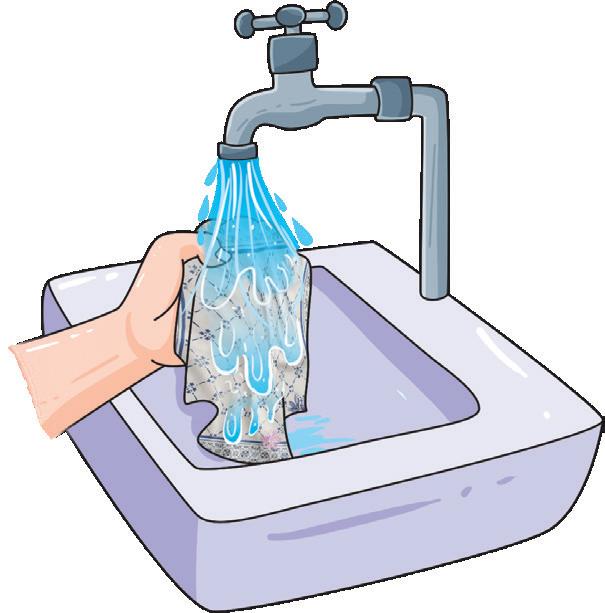

4. Now, spread the hanky out and feel it again. How does it feel?
5. Switch on the fan. Wait for some time. Feel the hanky. Is the hanky more dry? YES NO


6. Wait for some more time. You will see that the hanky becomes completely dry.
) Air can make wet things dry.

Assist the children to do this activity. Demonstrate it in class and let the children observe. Help them when they are using the water tap. They can also use water from their bottles but under supervision so as to not spill water. Associate this with the act of hanging clothes after washing to explain the concept of evaporation in more details, if required.
In this fun activity, we are going to learn to classify animals into different groups.
) Pictures of different kinds of animals (farm, wild, pet)
) Glue sticks
) Construction paper
) Markers, crayons or water colours








Let’s Do:
1. Choose any one of the following group of animals—farm animals, water animals, wild animals, and pets. Did you choose a group?
YES NO

2. Take the pictures of the animals. Then, keep with you only those animals that belong to the group you have chosen. You may ask an adult for help. Did you group the animals?
YES NO
3. Using a glue stick, paste the pictures on the construction paper.
4. Decorate the sheet with colours.
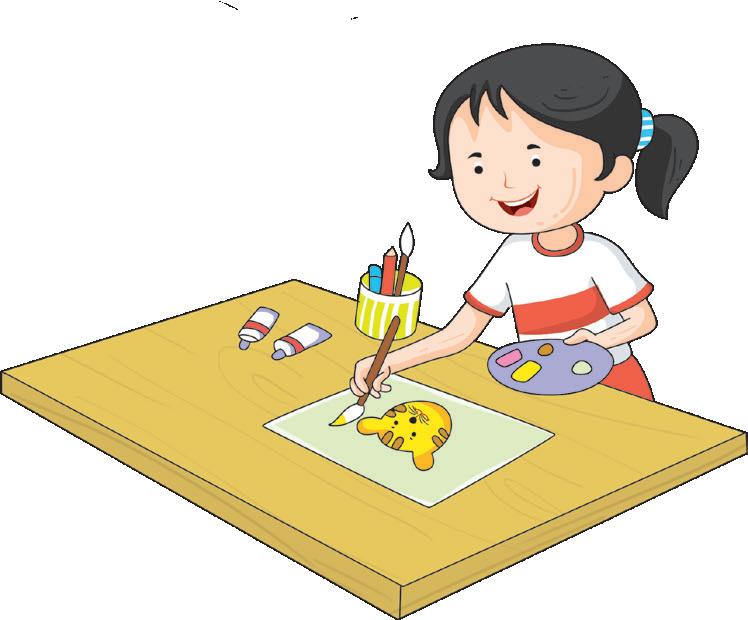
) We can group pet animals together, like cats and dogs.
) We can group farm animals together, like cows, goats, and hens.
) We can group wild animals together, like elephants, snakes, and tigers.

Assist the children to do the activity. Explain why animals are grouped as pets, farm animals, and wild animals. Help them to paste and group the pictures, whenever required.

In this fun activity, we will learn about the clothes we wear in different seasons.
Let’s Collect
) Pictures of various clothing items (e.g., coats, hats, umbrellas, sunglasses, swimsuits, boots, etc.)
) Large sheets of paper
) Markers or crayons
) Glue sticks


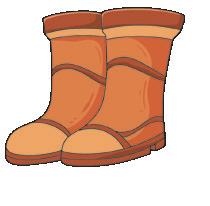







Let’s Do:
1. Look at the pictures of the different items of clothes.
2. Now guess: Do you wear these clothes when it is hot or when it is cold?





3. Do you wear these clothes when it is raining? YES NO




4. Do you wear these clothes when it is cold or when it is hot?

COLD






5. You may ask your parents / teachers for help to correctly guess the answers.
6. Once all the clothes for the seasons are correctly guessed, stick the pictures on the large sheet of paper.
7. Ask your parents / teacher why these clothes are worn according to the seasons.
8. You may display the finished season sheet in your class.
) We know about different seasons like summer, rainy and winter.
) We know which clothes and items to wear in each season.
) We know how to sort different items and clothes for different seasons.

For the teacher
Assist children to do this activity. Ask questions like, “Why do we wear coats in the winter?” or “Why do we use umbrellas in the rainy season?” to measure comprehension of the concept.
In this fun activity, we will learn about different sizes of circles.
Let’s Collect
) Sheets of paper
) Pencils
) Assortment of jar lids in various sizes


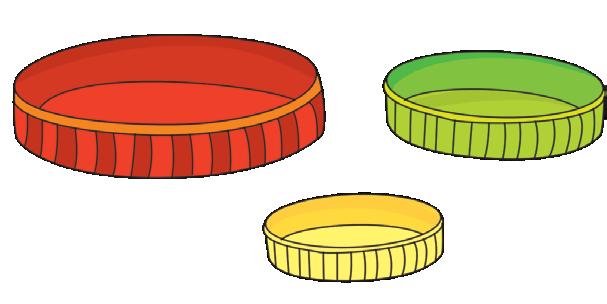
Let’s Do:
1. Show the children how to place a lid on the paper and trace around it with your finger to create a circle.
2. Then, choose a lid and place it on the paper. Trace around it with a pencil to create a circle.

3. Repeat the process with a larger lid, ensuring the new circle is around the first one, creating a pattern of bigger circles outside smaller circles.

4. Continue using bigger and bigger lids to make bigger circles outside the smaller ones.
5. Distribute the paper, pencils, and lids to each child.
6. Invite the children to select a lid and trace around it to create their first circle.

7. Ask them to choose another lid that is slightly larger and trace around it to create the next circle.
8. Continue this process, encouraging the children to create an arrangement of circles from smallest to largest.
) We know about different sizes of circles.
) We know that smaller sizes can fit inside larger sizes.

Assist the children to have a clear grasp of spatial relations in terms of sizes since this is a completely teacher-led activity.

In this fun activity, we will understand the importance of water.
Let’s Collect
) A large container (e.g., a bucket)
) Small plastic mugs
) Plants, for watering
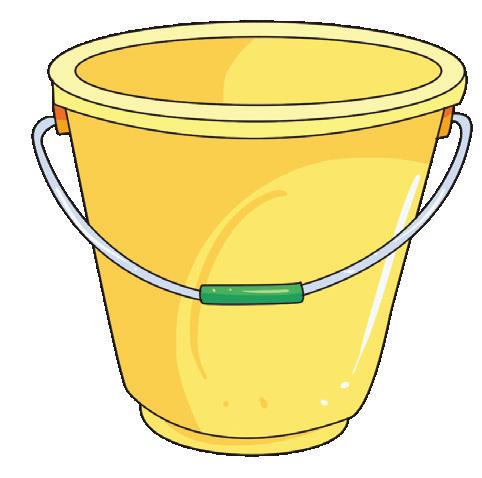



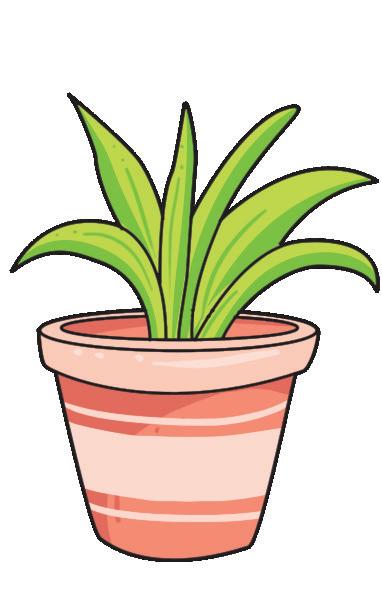
Children would also need access to water.
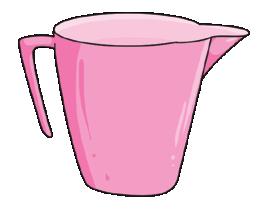

Let’s Do:
1. Take the empty bucket and the mug to the water tap.
2. Now think: do you need water to drink? YES NO
If you tick yes, then take a mug of water and put it in the bucket.
3. Do you need water for washing and bathing?
YES NO If you tick yes, then take a mug of water and put it in the bucket.
4. Do you need water for cooking and cleaning?
YES NO
If you tick yes, then take a mug of water and put it in the bucket.

5. Do animals and plants need water? YES NO If you tick yes, then take a mug of water and put it in the bucket.
6. Now, take the bucket of water and water the plants in your garden / around your house / in your school.
We
) Water has many important uses.


For the teacher
Assist the children to do this activity. Encourage them to think of the many uses of water. Also encourage them to think why water should not be wasted.
In this fun activity, we are going to learn about different tastes.
Let’s Collect
) A few neem leaves
) A teaspoon of salt
) A wedge of lemon


) A small candy, or a little bit of sugar


Let’s Do:
1. Take a neem leaf. Wash it clean. Take a bite of it. How does it taste?
2. Have a sip of water.


3. Take the lemon wedge. Squeeze a little of its juice in your mouth. How does it taste? SOUR
4. Have a sip of water.
5. Take a pinch of salt. Put it in your mouth to taste it. How does it taste?
6. Have a sip of water.


7. Take a little bit of sugar, or the candy. Taste it. How does it taste?
SWEET
8. Finish the toffee, if you are eating it. Have a sip of water.

) There are different types of taste: bitter, sour, salty and sweet.

Assist the children to do this activity. Once they taste these items, give them examples of other sweet, sour and salty items. Ensure that none of the things are eaten in excess.

In this fun activity, we will learn to arrange things in similar patterns.
Let’s Collect
) Assortment of objects such as crayons, paintbrushes, building blocks, plastic animals, etc.
) A flat surface like a table, chalk tray, or floor space







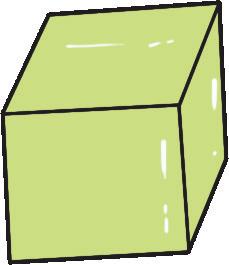


1. Create a simple pattern with the objects, like ‘block, brush, block, brush.’

2. Place the pattern on a table, chalk tray, or floor where children can easily see them.
3. Repeat this with different patterns, such as “crayon, brush, crayon, brush” or “plastic animal, block, plastic animal, block.”
4. Arrange the children in small groups and provide each group with a set of objects.
5. Ask them to create their own patterns using the objects.
6. As they work, move around the room to provide assistance and ensure they understand the concept of patterns.

7. Once the children have created their patterns, have them describe their patterns to the group.

8. Challenge the children to create more complex patterns using three or more different types of objects. For example, “crayon, brush, block, crayon, brush, block.”
9. Have the children swap patterns with another group and describe the new pattern they see.
) We know how to arrange objects in a similar order to create patterns.

Assist the children. Encourage them to name their sets. Help them understand the order of arrangement.
In this fun activity, we will learn to classify objects based on colour, size, and shape.
Let’s Collect
) A 6-section egg carton or a similar divided container

) A variety of buttons (different colours, sizes, and shapes)
) Glue
Let’s Do
1. Ask an adult for help to glue a different button at the bottom of each section of the carton. Ensure each section has a button of a distinct colour, size, or shape.
2. Now look at the buttons carefully and think about how they can be similar or different.

3. Sort the buttons into the different sections of the carton. For example, place all red buttons in the section with the red button.

4. After sorting by colour, mix the buttons again and sort by size.
5. Finally, sort the buttons by shape.
) We know how to sort things in terms of their colour, shape, and size.

Assist the children. Ask them what they noticed about the buttons and how they decided where each button belonged. Discuss the importance of sorting and classification in everyday life.
In this fun activity, we are going to learn about using light to form shadows.
Let’s Collect
) 1 torch
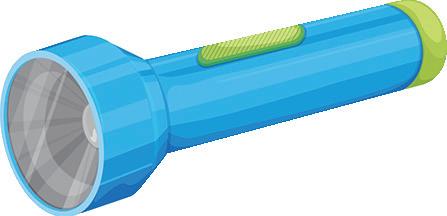
Let’s Do:
1. Join your thumb to two of your fingers, as shown in the image.
2. Keep your first and last fingers straight.
3. Stand in front of a wall.


4. Turn the torch on, shine the light towards the wall. Then, keep your hand in front of it. Make the shape with your fingers that you made in steps 1 and 2.
5. Can you see a shape on the wall? YES NO
6. Switch off the torch. Can you see any shape on the wall now?
YES NO
7. Do we need light to form shadows? YES NO
8. Switch the torch on again. Then, remove your hand from the front of it. Can you see any shadow?
YES NO
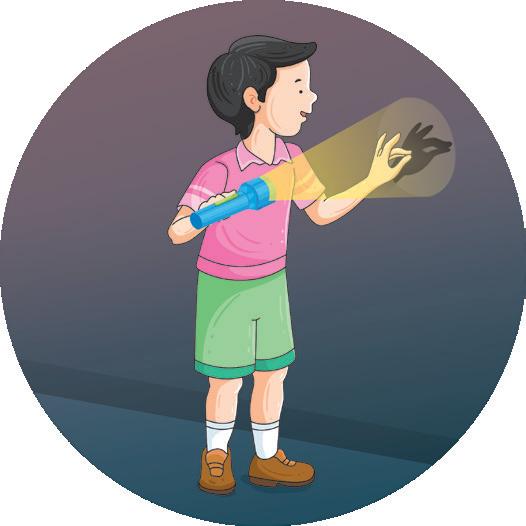


9. Do we need something to be in front of the light to form shadows?
YES NO
You can make different kinds of shapes with your hands and have fun making shadows.
) We need light to make shadows. ) We need something in front of the light to get its shadow.

Assist the children to do this activity. Demonstrate it in class and let the children observe. You may use other sources of light, like a candle or a lamp or a bulb, but ensure that the children do not use these objects without supervision.

In this fun activity, we will learn how to arrange an event in the correct order.
Let’s Collect
) Sequencing cards with three stages for each vehicle:
a. Car: Dirty car, cleaning the car, clean car
b. Ambulance: Ambulance in the garage, ambulance receiving a call, ambulance on the road with sirens on


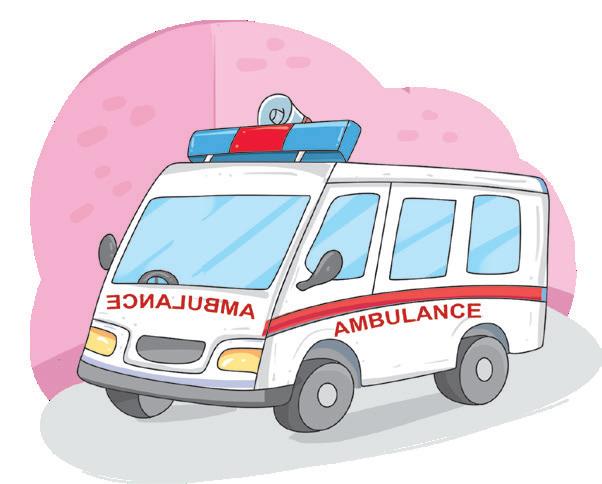
) Truck: Empty truck, loading the truck, loaded truck on the road



) Bicycle: Bicycle with a flat tire, repairing the tire, bicycle with a fixed tire

Let’s Do:


1. Take the sequence of the car.
2. Arrange the cards in the correct order.
3. You may ask for an adult’s help to arrange the cards in the correct sequence.




4. Once done, you can take the other cards and arrange them in the correct order of events.
) We know how to arrange an event in the correct order.

Assist the children wherever required in understanding sequence of events, and arranging the sequence cards. Give them examples of stories to show that incidents are always arranged in a sequence.
In this fun activity, we are going to learn that objects of certain shapes can fly.
Let’s Collect
) A sheet of paper (A4-size), can be of any colour
Let’s Do:

1. Fold the paper in half, like closing a book.

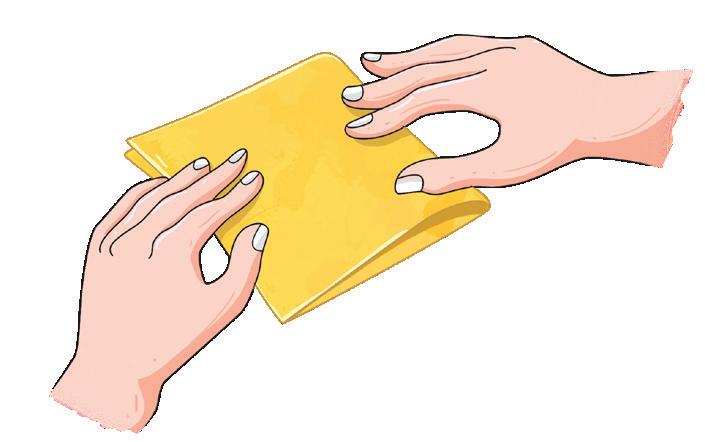
2. Once folded, open the paper again. Do you see a crease in the middle. YES NO


3. Fold the two top corners down to the middle.

4. Fold the paper again.
5. Fold each side to the bottom.


6. Does your plane look like this? YES NO Your plane is ready. Now, throw it gently at an angle to make it fly.

) Objects with tip, wings, and tail can fly and stay up in the air for some time.

Assist the children to do this activity. Once you fold the paper plane, supervise the children closely when they fold the paper. After the students have flown the paper planes, encourage them to pick them up from the ground to avoid littering. Compare the similarity in shapes between the paper plane and things like aeroplanes and birds to connect the concept with the real world.

In this fun activity, we will learn where an object is when placed around another object.
Let’s Collect
) Small matchboxes (or small containers such as empty mint tins, plastic containers, or even small cardboard boxes)
) Buttons (or other small objects such as beads, coins, or small toy pieces)
) Contact paper (optional, for covering the boxes)


Let’s Do:
1. Hand out the materials to each child.
2. Tell them to listen to what you will say and do that action.
3. Give a series of simple, clear instructions for the children to follow, such as:
a. “Put your button inside your box.”

b. “Take your button out of your box.”
c. “Place your button on top of your box.”
d. “Put your button next to your box.”
e. “Place your button under your box.”
f. “Hold your button in front of your box.”
g. “Put your button behind your box.”

4. Gather the children for a circle time. Explain to them about positions of objects in relation to other objects.
5. For further exploration, create a simple obstacle course where children must place their objects in various positions relative to other objects (e.g., “Place your button under the chair,” “Put your button on the table”).
6. Use different small objects and containers to keep the activity fresh and engaging.
) We know where one thing can be placed in relation to another thing.
) We know about positions like in, out, top, next, under, in front of, behind.

For the teacher
Assist the children since this activity has to be led by an adult. Help them to place the button in the correct place around the matchbox.
In this fun activity, we will practise remembering our address and phone number.
Let’s Collect
) Index cards
) Pen or marker
) Box to hold the cards
) Numeral stamps
) Stamp pads






Let’s Do
1. Write each child’s name, address, and phone number on an index card.
) Paper RahulVerma 21PushpVihar,NewDelhi 9783902741
2. File the cards in a box.

3. Tell the children that each card has their correct address and phone number.

4. Provide number stamps and stamp pads to the children.
5. Give each child a piece of paper and ask them to practise stamping the numbers that is in their address.
6. Then, tell them to practise stamping the numbers in their phone number.
7. Ask the children repeat their phone numbers a few times.
8. Encourage them to practise saying their phone numbers without seeing the cards.

9. Let the children take their stamped papers home to show their parents.
Now We Know
) Our address.
) Our phone number.

Assist the children to do this activity. Help them stamp the numbers correctly. Teach them how to read and repeat their phone numbers correctly.
DAWN is a comprehensive, NCF 2022-based Early Childhood Education program that lays a solid foundation for lifelong well-being and holistic growth, encompassing physical, cognitive, and socio-emotional development.
The book exposes students to basic concepts of STEM through simple, hands-on experiments on topics of space, temperature, dimensions, and sequence.
Additional Resources
• Flash Cards
• Sticker Sheets
• Suggested Activities List, for teacher and parents
• Teacher's Manual
• Digital Resouces
• Assessment Sheets and Holistic Progress Card
• Play-based learning activities, which promote holistic development of the child in all ECE domains
• School readiness, which is assured in the curriculum and learning design
• All-round development, in areas of physical, cognitive, cultural and socio-emotional domains
• Teacher assets, like assessment tools and lesson plans to help maximise program quality and outcomes
Uolo partners with K-12 schools to provide technology-enabled learning programs. We believe that pedagogy and technology must come together to deliver scalable learning experiences that generate measurable outcomes. Uolo is trusted by over 15,000+ schools across India, Southeast Asia and the Middle East.
ISBN 978-81-979765-2-0

hello@uolo.com
Not to be sold separately